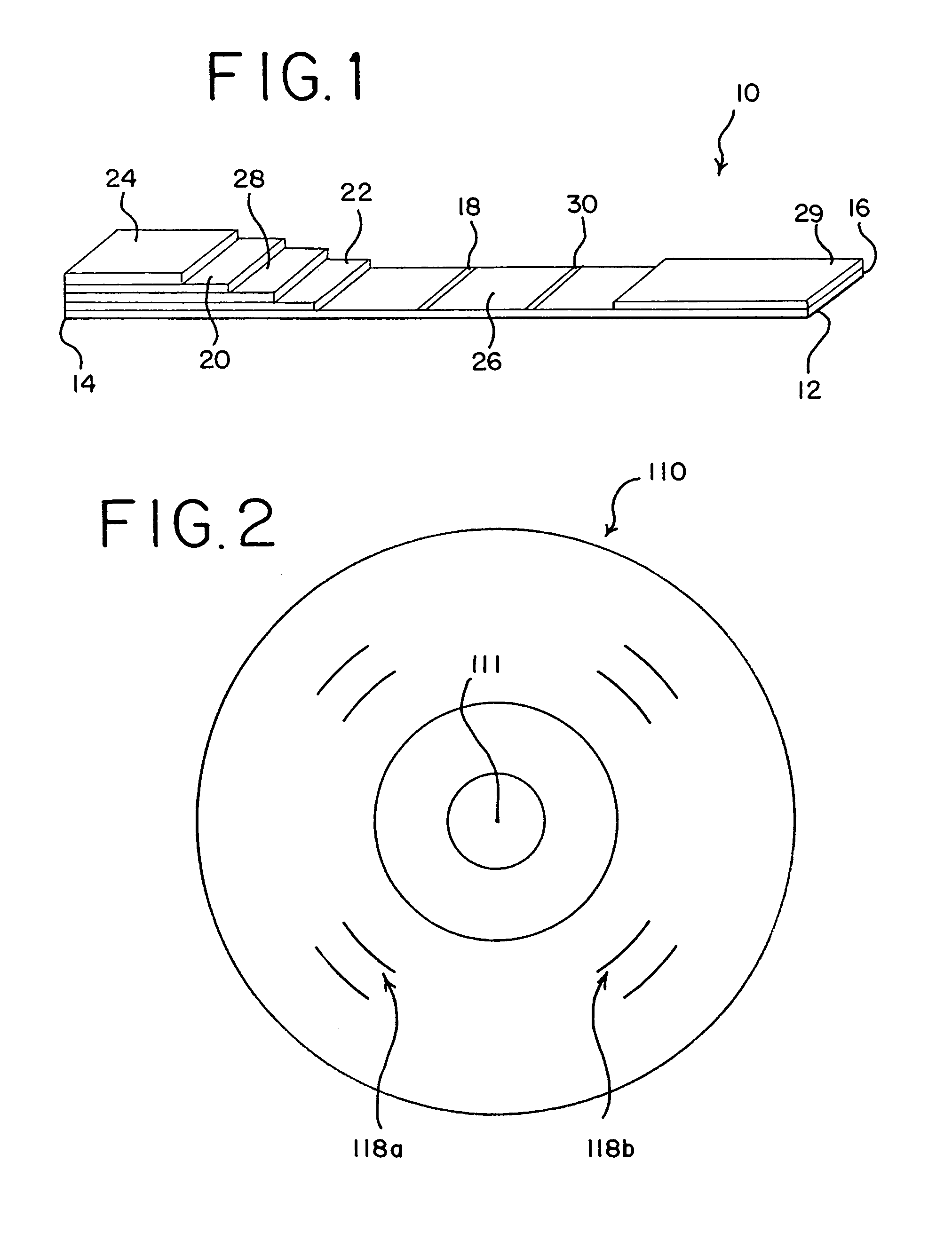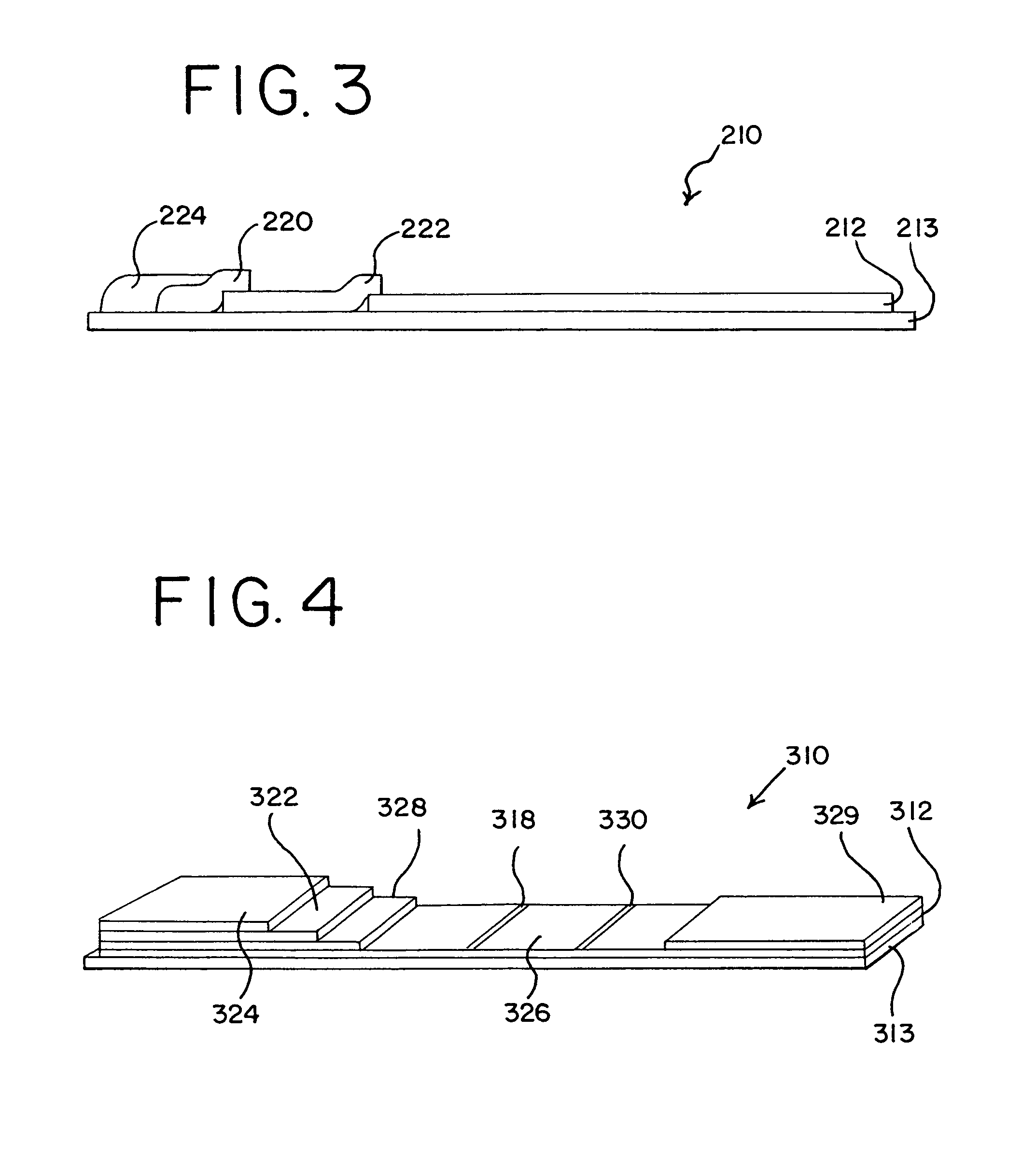Rapid prion-detection assay
a prion detection and detection method technology, applied in the field of prion detection assays for animal and human diseases, can solve the problems of difficult detection of prions, inability to extract and analyze pathogenic prion proteins, and time-consuming and complex analysis methods
- Summary
- Abstract
- Description
- Claims
- Application Information
AI Technical Summary
Problems solved by technology
Method used
Image
Examples
first embodiment
[0038]Shown in FIG. 1 is a test device 10 of a The test device 10 utilizes a pair of antibodies specific to PrPSC. These include (1) a labeled antibody that “detects” the PrPSC and (2) an immobilized antibody that “captures” the prion protein-antibody-label complex to form a “sandwich.” Briefly, in this invention, homogenized sample of a biological material is introduced to the test device. In the preferred embodiment, the sample first moves through a zone containing immobilized proteinase-K, which digests the nonpathogenic prion protein, leaving the PrPSC for analysis. The proteinase-K is immobilized to a solid support. The removal of the normal prion protein minimizes sample interference and results in a higher specificity for the analyte. As the treated sample moves through the test device, it encounters the first specific antibody conjugated to a label and affixed to a portion of the test device. In one embodiment, the label is a colored latex bead.
[0039]The fluid in the homoge...
second embodiment
[0071]In a second embodiment, the assay is conducted using a test system or device where the support for the proteinase-K is external to the porous membrane. The support may be, e.g., magnetic beads, latex supports, filter tips, colloidal particles, conjugate supports, plastic surfaces, or glass surfaces.
[0072]The first embodiment of the assay includes homogenizing the sample with a suitable buffer, substantially as described above, and applying the homogenized sample to the test device, such as the composite described above and depicted in FIG. 1. The sample may be applied directly to the digestive pad or the filter pad, or it may be filtered onto either of such pads. Preferably, however, filtration is accomplished in situ directly by the device.
[0073]In the digestive pad, the homogenized sample is treated with the immobilized proteinase-K. As the homogenized sample and PrPSC flow through the device, the antibody conjugated to a label, such as a colored bead or other particulate, b...
PUM
| Property | Measurement | Unit |
|---|---|---|
| ionic strength | aaaaa | aaaaa |
| extraction time | aaaaa | aaaaa |
| molar concentration | aaaaa | aaaaa |
Abstract
Description
Claims
Application Information
 Login to View More
Login to View More - R&D
- Intellectual Property
- Life Sciences
- Materials
- Tech Scout
- Unparalleled Data Quality
- Higher Quality Content
- 60% Fewer Hallucinations
Browse by: Latest US Patents, China's latest patents, Technical Efficacy Thesaurus, Application Domain, Technology Topic, Popular Technical Reports.
© 2025 PatSnap. All rights reserved.Legal|Privacy policy|Modern Slavery Act Transparency Statement|Sitemap|About US| Contact US: help@patsnap.com


